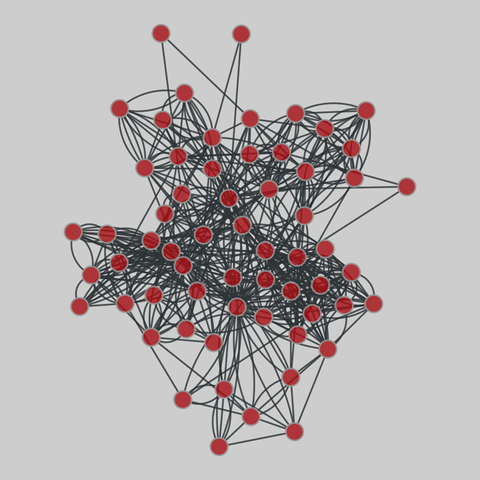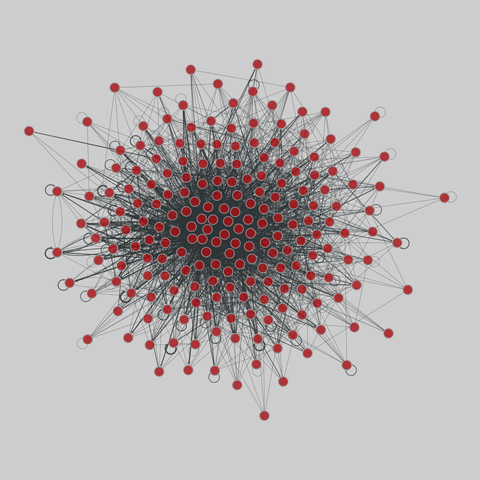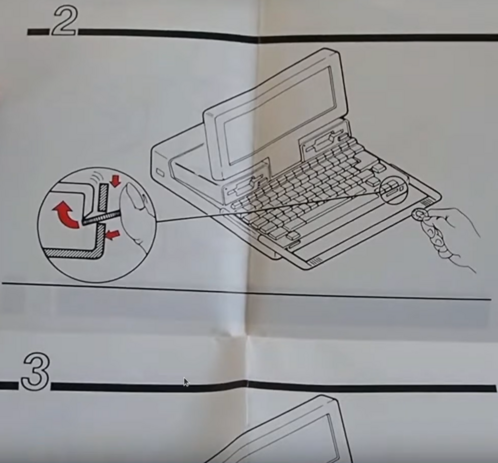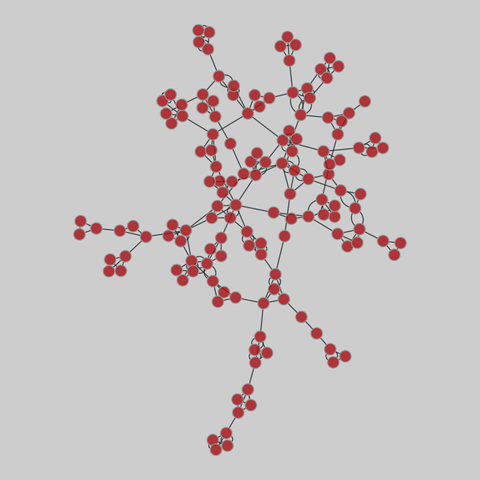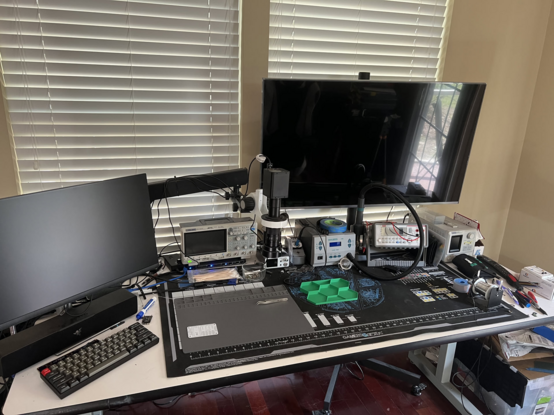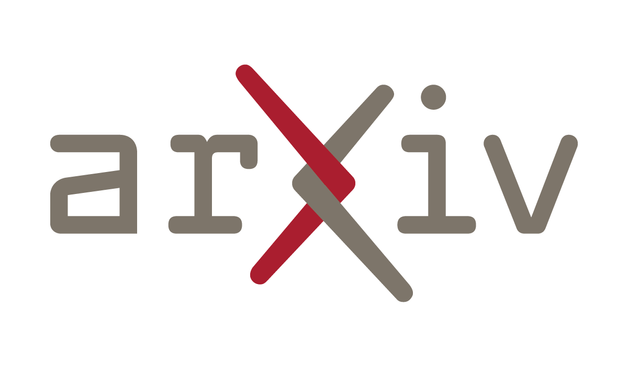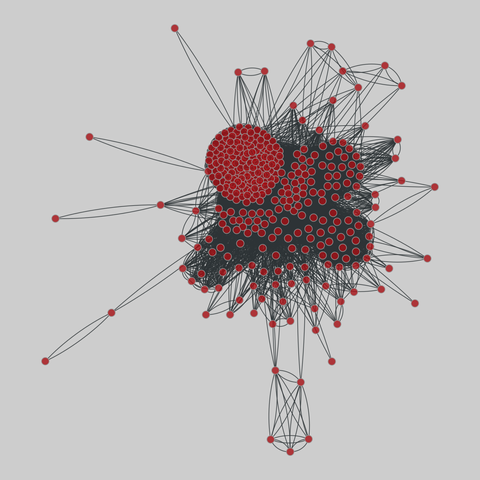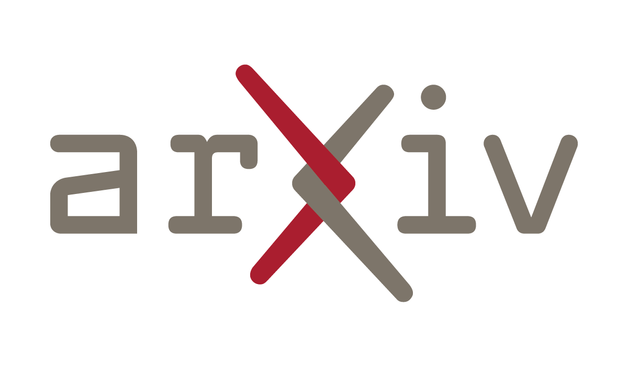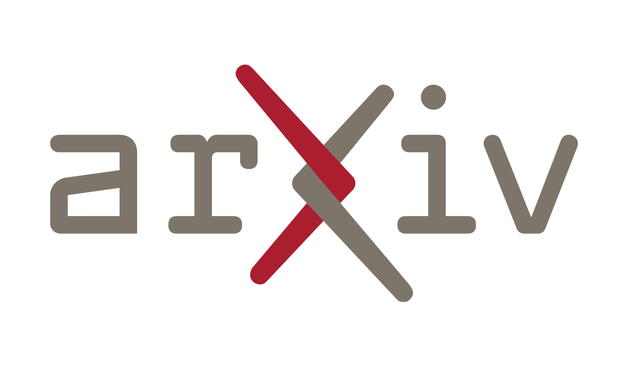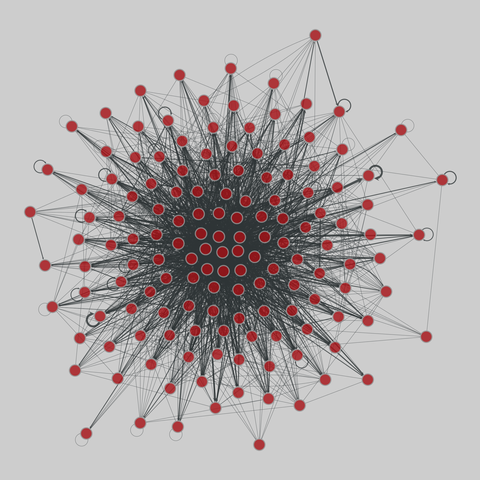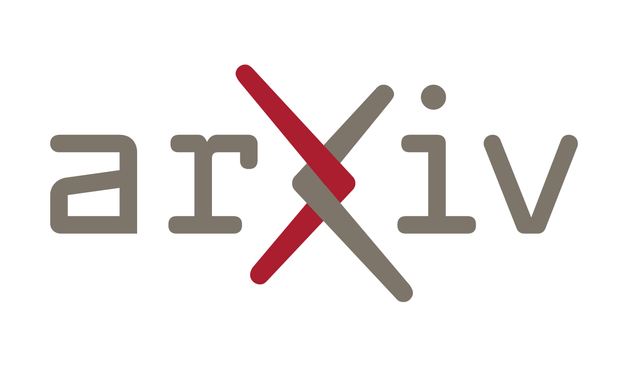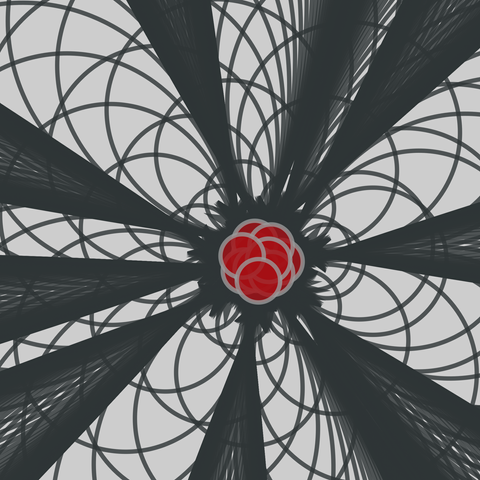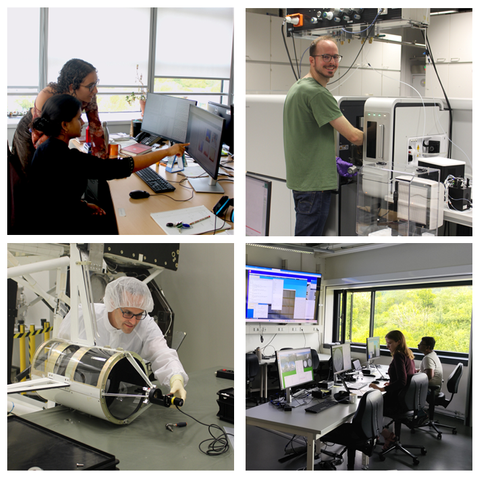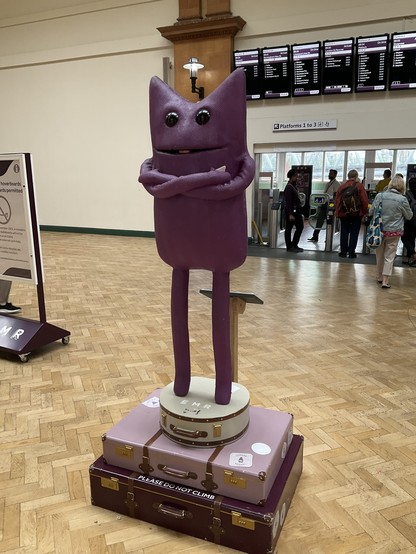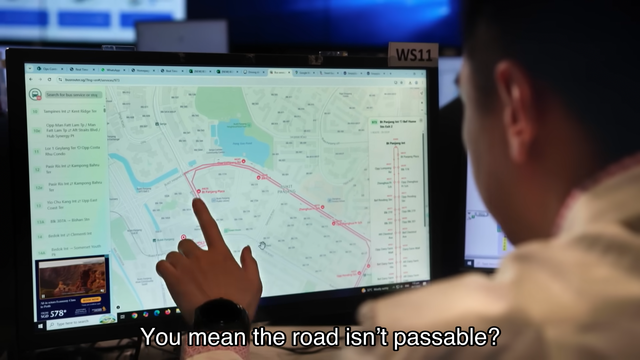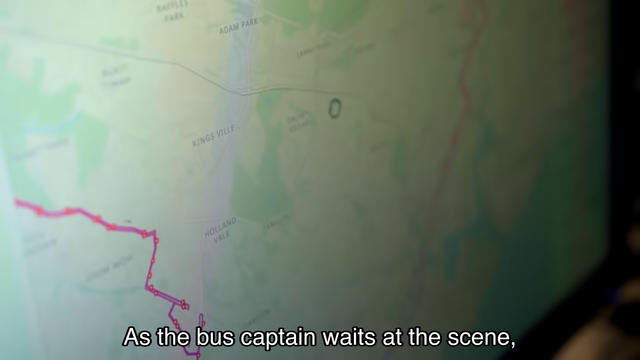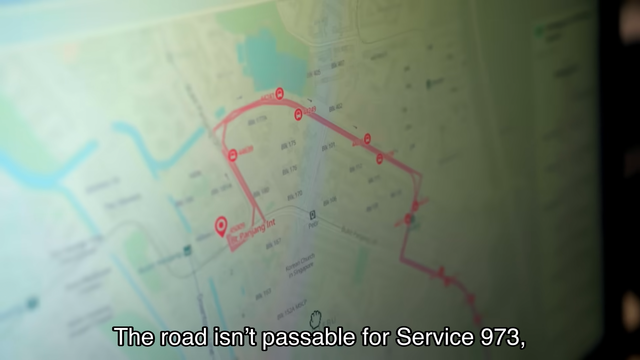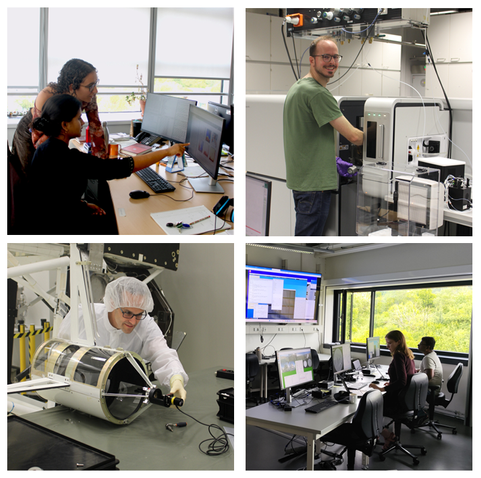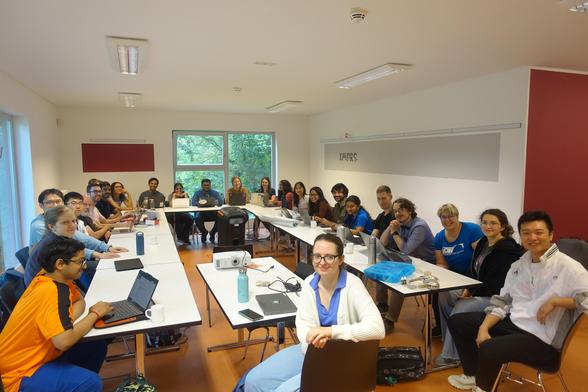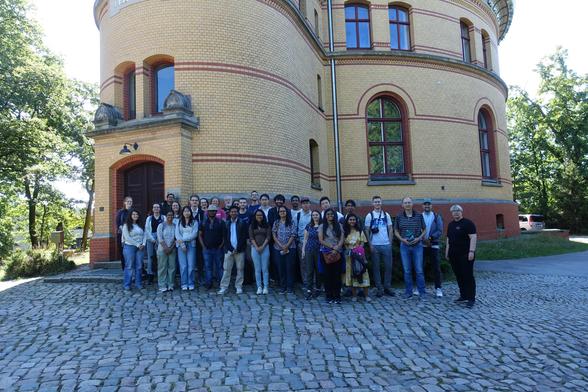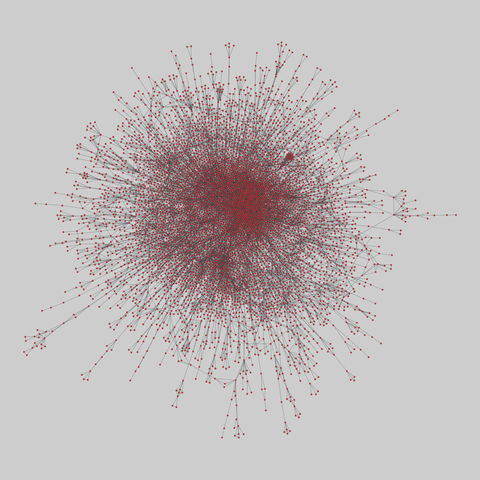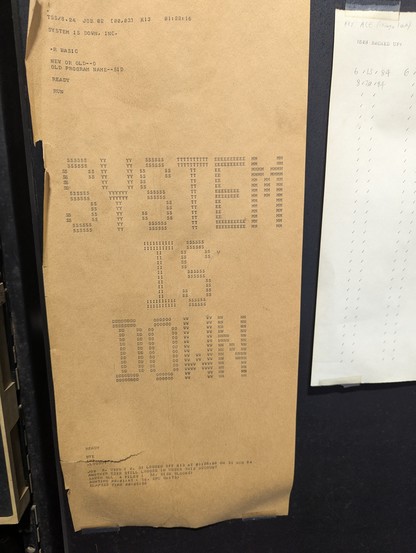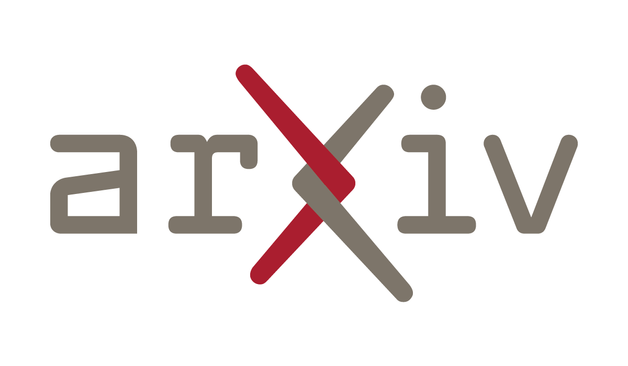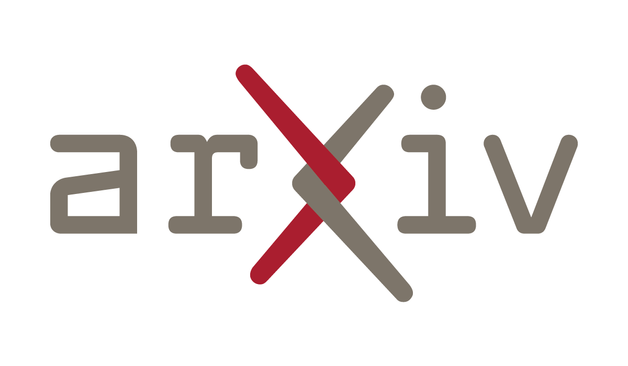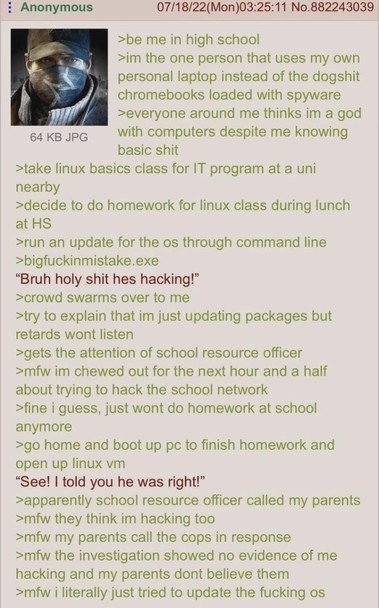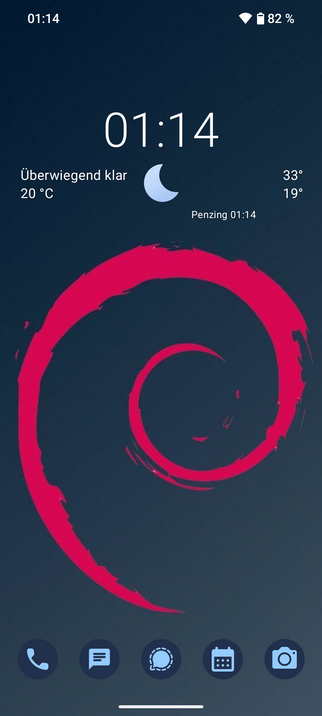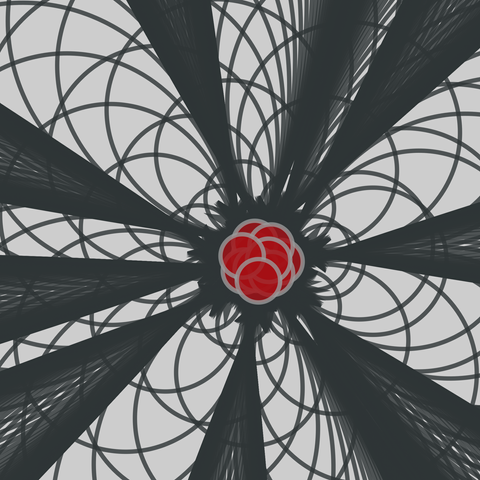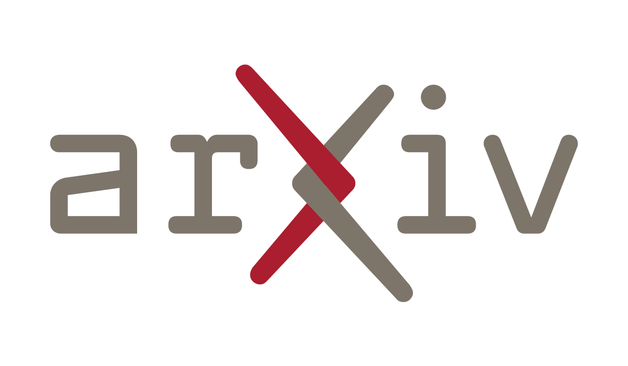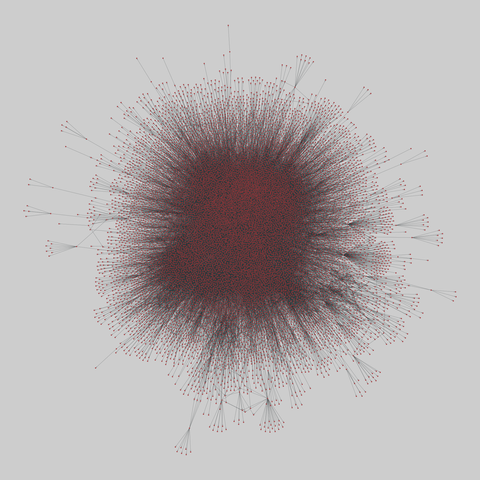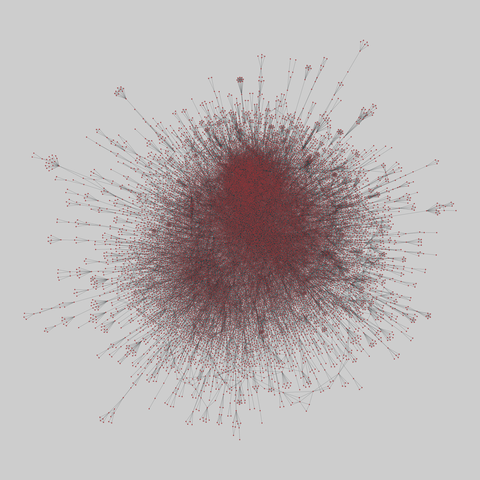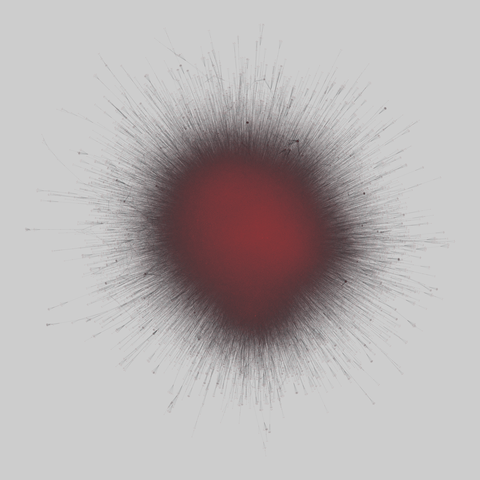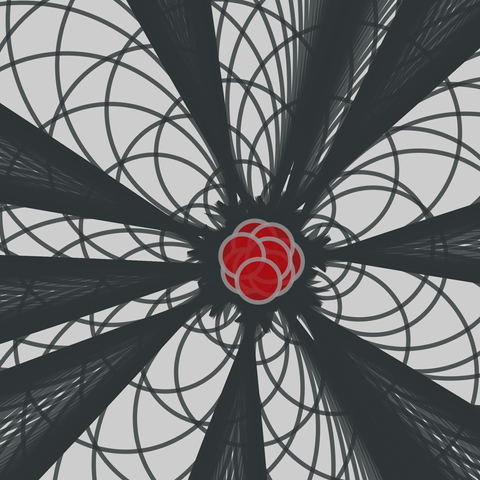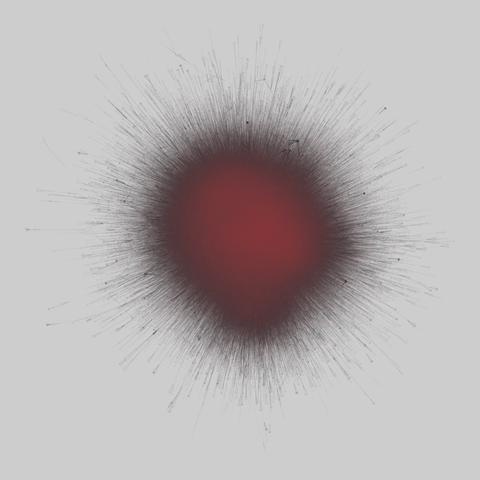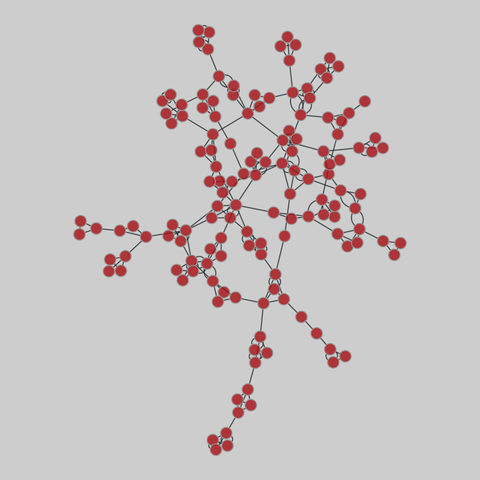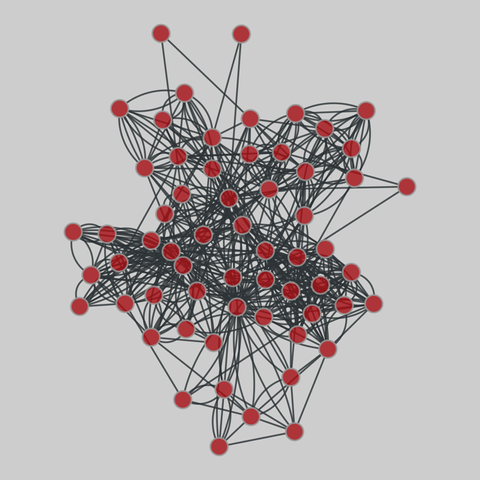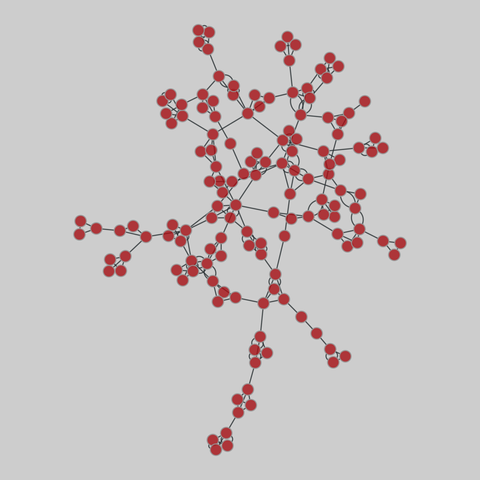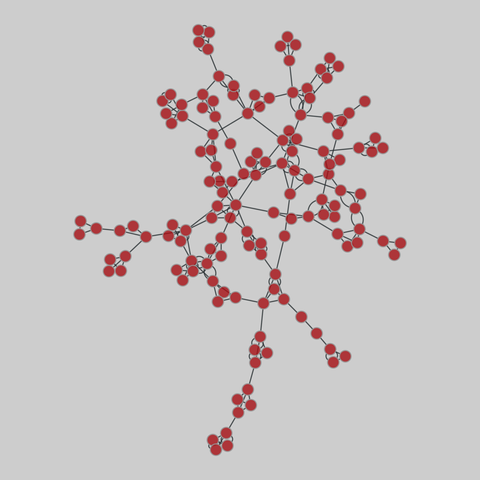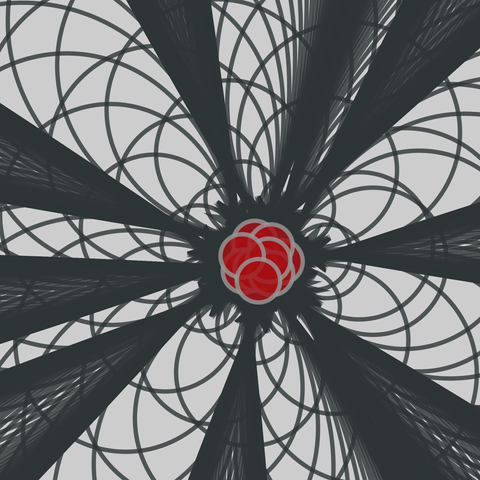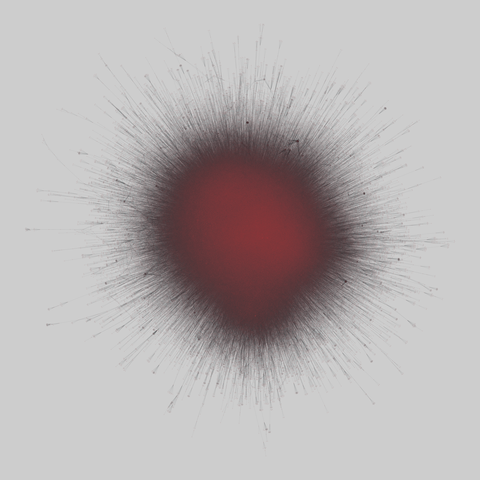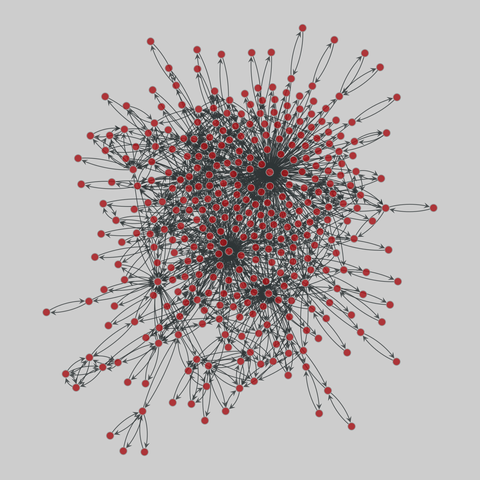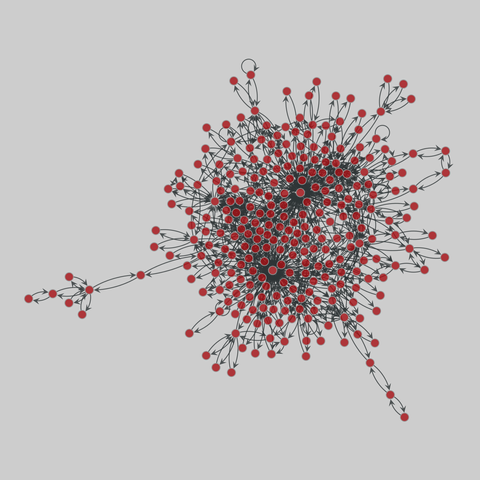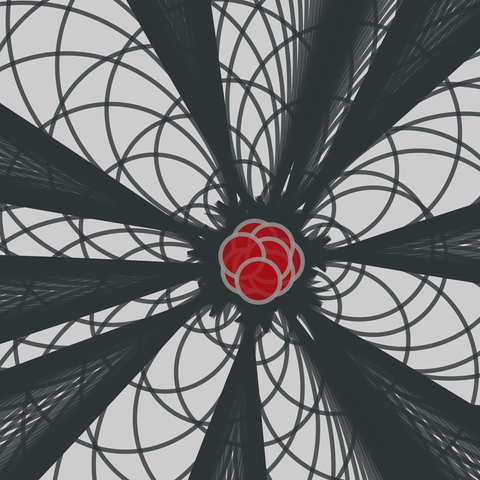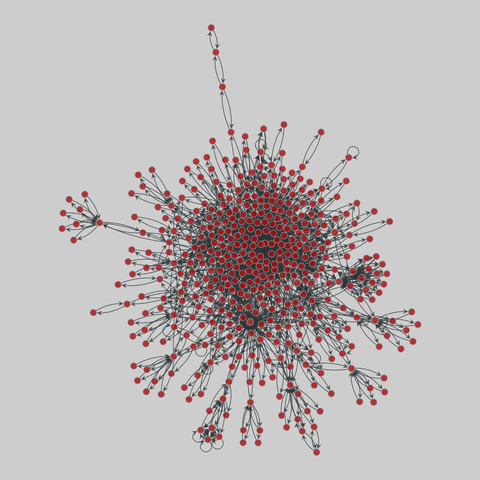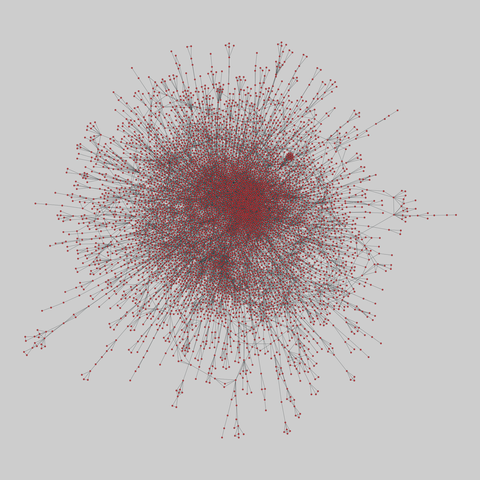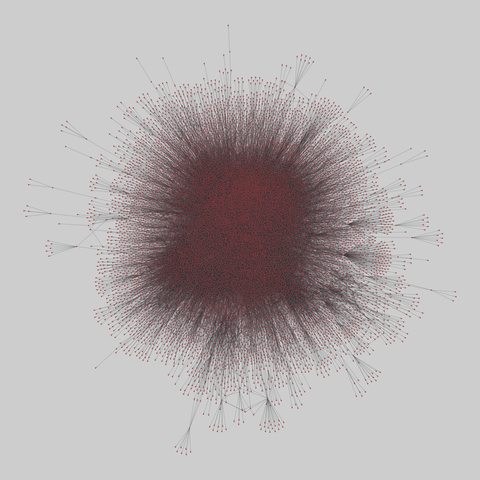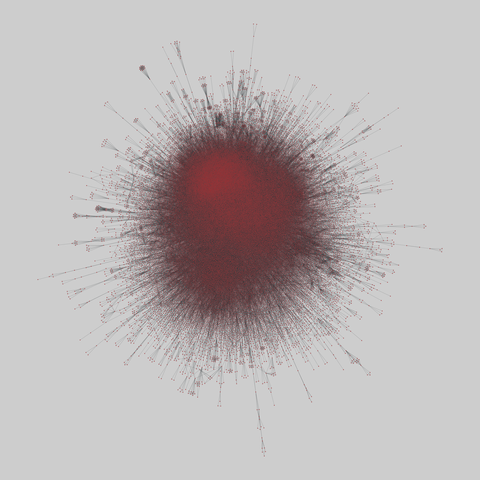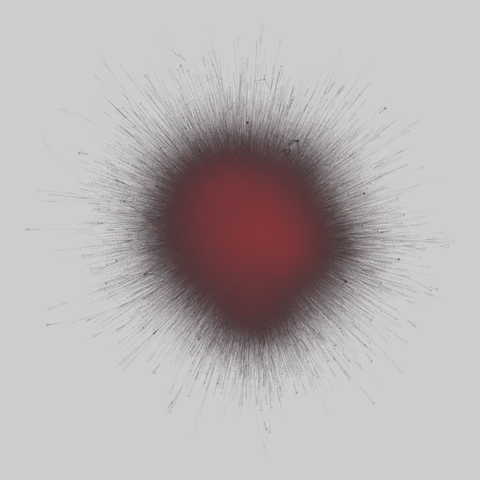cs_department: Aarhus Computer Science department relationships
Multiplex network consisting of 5 edge types corresponding to online and offline relationships (Facebook, leisure, work, co-authorship, lunch) between employees of the Computer Science department at Aarhus. Data hosted by Manlio De Domenico.
This network has 61 nodes and 620 edges.
Tags: Social, Relationships, Multilayer, Unweighted
Sort A Brick stellt gebrauchte Klemmbausteine automatisch zu Sets zusammen
Sort A Brick stellt mit Computer Vision und KI aus gebrauchten Klemmbausteinen automatisch Sets zusammen. Fehlende Teile werden ergänzt.
Har mailat EU-representanter med detta meddelande:
Under augusti rapporterade Bleeping computer dessa storastölder av data och säkerhetshål i vanligt förekommande system som används avprivata aktörer. Upplever du verkligen att du med säkerhet kan ta ett beslut om en så invasiv och integritetskränkandeteknologi som Chat Control utan att ta ibeaktande att mycket känslig information om EU-medborgare inte kommer att exponerasav ett intrång förr eller senare?För att se hur hundratusental…
faculty_hiring: Faculty hiring networks (Comp. Sci., Business, History)
Three networks of faculty hiring in Computer Science Departments, Business Schools, and History Departments. Each node is a PhD-granting institution in the respective field, and a directed edge (i,j) indicates that a person received their PhD from node i and was tenure-track faculty at node j during time of collection (2011-2013). All data collected from faculty public rosters at the sampled institutions.
Thi…
Bad UI: My wife bought a crockpot. No computer crap, just a control knob. Off. Low. High. Warm.
Dinner will be late tonight.
Once again, I am in the USA going through my original computer collection and looking through documentation to try and figure out how to disassemble a system. This time, it's not a VT125, but an IBM 5140. You need a coin to get the keyboard out!
student_cooperation: Student cooperation (2012)
Network of cooperation among students in the "Computer and Network Security" course at Ben-Gurion University, in 2012. Nodes are students, and edges denote cooperation between students while doing their homework. The graph contains three types of links: Time, Computer, Partners.
This network has 185 nodes and 360 edges.
Tags: Social, Offline, Multigraph, Unweighted
Went ahead and cleaned off the workbench as it has the tendency to accumulate random electronics on it. Still need to get the computer hooked back up, but it's nice to get back to soldering a few things here soon.
#electronics #workbench
Out of sheer curiosity, my wife just set up her first #Linux on a computer via the #Debian 13 #Trixie netinstall:
E3RG: Building Explicit Emotion-driven Empathetic Response Generation System with Multimodal Large Language Model
Ronghao Lin, Shuai Shen, Weipeng Hu, Qiaolin He, Aolin Xiong, Li Huang, Haifeng Hu, Yap-peng Tan
https://arxiv.org/abs/2508.12854
... an anecdote from IBM's Yorktown Heights Research Center. When a
programmer used his new computer terminal, all was fine when he was sitting
down, but he couldn't log in to the system when he was standing up. That
behavior was 100 percent repeatable: he could always log in when sitting and
never when standing.
Most of us just sit back and marvel at such a story; how could that terminal
know whether the poor guy was sitting or standing? Good debugg…
Russia Is Suspected to Be Behind Breach of Federal Court Filing System
Federal officials are scrambling to assess the damage and address flaws in a sprawling, heavily used computer system long known to have vulnerabilities.
Russia is at least in part responsible for a recent hack of the computer system that manages federal court documents,
including highly sensitive records that might contain information
that could reveal sources and people charged with national secur…
Feel like I'm probably overdoing it, but I'm in this headspace where I maintain a runnable playbook for everything computer related that I do in my personal life, even if I only expect to do it once.
webkb: WebKB graphs (1998)
Web graphs crawled from four Computer Science departments in 1998, with each page manually classified into one of 7 categories: course, department, faculty, project, staff, student, or other. All graphs included in a single .zip; also included are 'co-citation' graphs, which links i and j if they both point to some k. Edge weights count the number of links from i to j.
This network has 334 nodes and 32988 edges.
Tags: Informational, Web gr…
Right now it does do a limited form of isolation by putting everything in a temp directory, but of course this just makes sure you declare your header files. It doesn’t do anything to stop you referencing stuff by absolute path, or using the wrong compiler version, or depending on the system time, or hitting the network, or…
Control of a commercial vehicle by a tetraplegic human using a bimanual brain-computer interface
Xinyun Zou, Jorge Gamez, Meghna Menon, Phillip Ring, Chadwick Boulay, Likhith Chitneni, Jackson Brennecke, Shana R. Melby, Gracy Kureel, Kelsie Pejsa, Emily R. Rosario, Ausaf A. Bari, Aniruddh Ravindran, Tyson Aflalo, Spencer S. Kellis, Dimitar Filev, Florian Solzbacher, Richard A. Andersen
Navigating the Python Type Jungle
Andrei Nacu (Faculty of Computer Science, Alexandru Ioan Cuza University, Ia\c{s}i), Dorel Lucanu (Faculty of Computer Science, Alexandru Ioan Cuza University, Ia\c{s}i)
https://arxiv.org/abs/2509.13022
"The program totally backfired. People thought ELIZA was intelligent, they were confiding in the machine, revealing personal issues they would not tell anyone else. Even my secretary asked me to leave the room so she could be alone with the computer. They called me a genius for creating it, but I kept telling them that the computer was not thinking at all."
Oh, really, now, isn't that interesting, and so, of course, they reanimated it, because only a liberal socialist would call that a failure. 🤣
#posiwid #automatedgatheringofintel #agi
faculty_hiring: Faculty hiring networks (Comp. Sci., Business, History)
Three networks of faculty hiring in Computer Science Departments, Business Schools, and History Departments. Each node is a PhD-granting institution in the respective field, and a directed edge (i,j) indicates that a person received their PhD from node i and was tenure-track faculty at node j during time of collection (2011-2013). All data collected from faculty public rosters at the sampled institutions.
Thi…
Using Petri Nets for Context-Adaptive Robot Explanations
G\"orkem K{\i}l{\i}n\c{c} Soylu (Department of Computer Science and Informatics, School of Engineering, J\"onk\"oping University, J\"onk\"oping, Sweden), Neziha Akalin (Department of Computer Science and Informatics, School of Engineering, J\"onk\"oping University, J\"onk\"oping, Sweden), Maria Riveiro (Department of Computer Science and Informatics, School of Engineering, J\"onk\…
Smarter Staub: Wie millimetergroße Computer unsere Welt unbemerkt vermessen
"Smarter Staub" ist keine Science-Fiction mehr: Winzige Sensoren könnten in Zukunft unsere Umwelt unbemerkt überwachen.
packet_delays: Internet packet delays (2002)
A network representing the difference in delay observed by packet probes sent from a computer at Rice University to similar machines at different universities, in c.2002. The edge weight denotes the difference in delay of the packet in milliseconds.
This network has 10 nodes and 9567 edges.
Tags: Technological, Communication, Weighted
The Solar System School is now permanent! 🥳🥳
The unique graduate program offers students from all over the world the opportunity to obtain a doctorate in solar system research. 🛰️☀️🔭
Joint PR @…
cora: CORA citations (1998)
Citations among papers indexed by CORA, from 1998, an early computer science research paper search engine. If a paper i cites a paper j also in this data set, then a directed edge connects i to j. (Papers not in the data set are excluded.) Self-loops may be present. The dates of these snapshots are uncertain.
This network has 23166 nodes and 91500 edges.
Tags: Informational, Citation, Unweighted
Replaced article(s) found for cs.CV. https://arxiv.org/list/cs.CV/new
[3/4]:
- RL-MoE: An Image-Based Privacy Preserving Approach In Intelligent Transportation System
Abdolazim Rezaei, Mehdi Sookhak, Mahboobeh Haghparast
I got a Thinkpad x270 at a great price a few months ago, and the Arch Linux & i3wm combo makes it work great.
Their reputation for working well with GNU/Linux systems is well deserved.
If you are looking for alternatives for your computer equipment, the second-hand market offers this and other classic models at a very good price in almost every corner of the globe. And when the second wave of equipment arrives thanks to Windows 11, this is going to be amazing.
On my way back from #DocEng25 in Nottingham. First leg Nottingham to London St. Pancras by #EMR
Train is on time, due to several (!) computer problems: no reservations shown, no first class service. So no tea on the train this time
Glad that someone informed me that my side project https://busrouter.sg is featured on CNA Insider's Singapore Hour "The Unseen Side of Singapore’s Bus System", under the chapter "Woodlands Bus Depot: The Eyes and Ears of Singapore’s Bus System" (04:08)
faculty_hiring_us: Faculty hiring networks in the US (2022)
Networks of faculty hiring for all PhD-granting US universities over the decade 2011–2020. Each node is a PhD-granting institution, and a directed edge (i,j) indicates that a person received their PhD from node i and was tenure-track faculty at node j during time of collection (2011-2020). This dataset is divided into separate networks for all 107 fields, as well as aggregate networks for 8 domains, and an overall network for …
TFW, you find an old SD card but can't remember whats on it, so you put it in your computer and it transports you to another world...
#Greenland #KalaallitNunaat
The International Max Planck Research School for Solar System Science becomes a permanent institution in Göttingen and Braunschweig
The Solar System School, the joint graduate school of the Max Planck Institute for Solar System Research, the University of Göttingen, and the Technical University of Braunschweig, is now a permanent fixture in doctoral training in Göttingen and Braunschweig. The Max Planck Society will continue the International Max Planck Research School for Solar Syste…
arxiv_collab: Scientific collaborations in physics (1995-2005)
Collaboration graphs for scientists, extracted from the Los Alamos e-Print arXiv (physics), for 1995-1999 for three categories, and additionally for 1995-2003 and 1995-2005 for one category. For copyright reasons, the MEDLINE (biomedical research) and NCSTRL (computer science) collaboration graphs from this paper are not publicly available.
This network has 8361 nodes and 15751 edges.
Tags: Social, Collaboration…
@… Yes maybe you're right on cope " “All the computer is is just an extension of me,” Cope says. “They’re nothing but wonderfully organized shovels. I wouldn’t give credit to the shovel for digging the hole. Would you?”"
Zum 75. von Steve Wozniak: Kurzer Höhenflug, ein Absturz, aber immer obenauf
Steve Wozniak baute die ersten beiden Apple-Computer. Obwohl er sich bereits Mitte der 1980er-Jahre zurückzog, steht Woz bis heute auf Apples Gehaltsliste.
So, apparently #Munich's transport authority has a computer system that will refuse to sell a yearly commuter pass for your kid if you already have one yourself. But it doesn't tell you. It just silently disappears your online order. It worked last year because that was "their old system". You will get told so after waiting for 1 hour on a hotline or waiting in line for more than…
UTI-LLM: A Personalized Articulatory-Speech Therapy Assistance System Based on Multimodal Large Language Model
Yudong Yang, Xiaokang Liu, Shaofeng zhao, Rongfeng Su, Nan Yan, Lan Wang
https://arxiv.org/abs/2509.13145
i have this webpage where all the images are position:absolute and on one computer they're like 32 pixels over to the left. how do i make postion:absolute more absolute
A computer once beat me at chess, but it was no match for me at kick
boxing.
-- Emo Philips
My perfect combination for freedom and data protection: Debian on my computer and GrapheneOS on my Pixel. 👍
#linux #opensource #freesoftware
Just added a second 8-GB SDRAM card to my desktop computer. Yeah, I can crawl around on the floor under the desk better than I used to be able to. :-) We'll see if the new RAM solves the recent ceaseless drive churning I've been enduring lately. So far, it seems to have done so! The computer is now four years old, but it still seems pretty fast, or it did until this churning started up recently. (Yes, I checked for viruses and ran other system integrity tests, of course.)
#TGIQF: Das Quiz der Computerfehler
Wenn der Computer nicht so arbeiten will, wie er soll, wird es schnell stressig. Ein Quiz zu Computerburgs, Fehlermeldungen und Co.
I don't understand why so few people use openSUSE compared to Fedora, Debian, Ububububu, and the meme distros (btw). It's basically perfect. It has every package you could hope for, even Nvidia and Steam, right there in the repo. Tested packages with snapshots for rollback. Doesn't force Wayland (yet?). The sensible defaults on weird hardware work great. Why waste time with anything else? I'm old and grumpy now, I just want a *nix computer, not a hobby.
@… Yes, exactly! And I think that is closer to what Alexander meant about patterns, TBH.
But honestly, I don’t think he did a stellar job explaining patterns, and his other work is way better.
IIRC A City Is Not A Tree covers changes in the system over time (and how observing the system changes the system), even though its main point is that you …
packet_delays: Internet packet delays (2002)
A network representing the difference in delay observed by packet probes sent from a computer at Rice University to similar machines at different universities, in c.2002. The edge weight denotes the difference in delay of the packet in milliseconds.
This network has 10 nodes and 9567 edges.
Tags: Technological, Communication, Weighted
If you get an invite to this generative art software engineering call, note that if you submit something and it gets accepted, as far as I can tell it would cost you $3000 in open access fees... unless you want it to languish behind a paywall (you'd then only be allowed to share an unedited draft, and even then would have to advertise the paywall on it). They don't seem to want to make this clear in their call.
Interesting: I was unsure if I should buy a 2nd hand OLED computer monitor for a specific price and if I really should because it's some kind of luxury for a few hundred Euros.
So I asked ChatGPT for (1) estimating a fair price given all the relevant information about that and then (2) describing my situation and letting it generate a /- list (to check if I have overseen an aspect) and a recommendation for buy/not buy.
The result was fascinating to me. One of the better use-…
Code Agent can be an End-to-end System Hacker: Benchmarking Real-world Threats of Computer-use Agent
Weidi Luo, Qiming Zhang, Tianyu Lu, Xiaogeng Liu, Bin Hu, Hung-Chun Chiu, Siyuan Ma, Yizhe Zhang, Xusheng Xiao, Yinzhi Cao, Zhen Xiang, Chaowei Xiao
https://arxiv.org/abs/2510.06607
@… Or had to make a YAML file work in a weird build system (looking at you, GitHub).
dblp_cite: DBLP citations (2014)
Citations among papers contained in the DBLP computer science bibliography. If a paper i cites a paper j also in this data set, then a directed edge connects i to j. (Papers not in the data set are excluded.) Self-loops may be present. This snapshot from May 2014.
This network has 12590 nodes and 49759 edges.
Tags: Informational, Citation, Unweighted
Der Youtuber Shadowman39 hat etwas geschafft, was auf den ersten Blick unmöglich erscheint: einen vollständig funktionsfähigen 8-Bit-Computer aus K'nex-Bauteilen. 🧩💻
Zum Artikel: https://heise.de/-10495869?wt_mc=sm.red.ho.mas…
arxiv_collab: Scientific collaborations in physics (1995-2005)
Collaboration graphs for scientists, extracted from the Los Alamos e-Print arXiv (physics), for 1995-1999 for three categories, and additionally for 1995-2003 and 1995-2005 for one category. For copyright reasons, the MEDLINE (biomedical research) and NCSTRL (computer science) collaboration graphs from this paper are not publicly available.
This network has 16726 nodes and 47594 edges.
Tags: Social, Collaboratio…
dblp_coauthor_snap: DBLP authors (2012)
A coauthorship network extracted from the DBLP computer science manuscript database, in 2012. This network is a one-mode projection from the bipartite graph of computer scientists and their publications.
This network has 425957 nodes and 1049866 edges.
Tags: Social, Collaboration, Unweighted, Metadata, Projection
Raspberry Pi OS wechselt auf Debian-Trixie-Basis
Das Betriebssystem Raspberry Pi OS basiert auf Debian. Jetzt wechselt auch das Einplatinen-Computer-Betriebssystem auf den Trixie-Stand.
https://www.
packet_delays: Internet packet delays (2002)
A network representing the difference in delay observed by packet probes sent from a computer at Rice University to similar machines at different universities, in c.2002. The edge weight denotes the difference in delay of the packet in milliseconds.
This network has 10 nodes and 9567 edges.
Tags: Technological, Communication, Weighted
dblp_coauthor_snap: DBLP authors (2012)
A coauthorship network extracted from the DBLP computer science manuscript database, in 2012. This network is a one-mode projection from the bipartite graph of computer scientists and their publications.
This network has 425957 nodes and 1049866 edges.
Tags: Social, Collaboration, Unweighted, Metadata, Projection
student_cooperation: Student cooperation (2012)
Network of cooperation among students in the "Computer and Network Security" course at Ben-Gurion University, in 2012. Nodes are students, and edges denote cooperation between students while doing their homework. The graph contains three types of links: Time, Computer, Partners.
This network has 185 nodes and 360 edges.
Tags: Social, Offline, Multigraph, Unweighted
cs_department: Aarhus Computer Science department relationships
Multiplex network consisting of 5 edge types corresponding to online and offline relationships (Facebook, leisure, work, co-authorship, lunch) between employees of the Computer Science department at Aarhus. Data hosted by Manlio De Domenico.
This network has 61 nodes and 620 edges.
Tags: Social, Relationships, Multilayer, Unweighted
cora: CORA citations (1998)
Citations among papers indexed by CORA, from 1998, an early computer science research paper search engine. If a paper i cites a paper j also in this data set, then a directed edge connects i to j. (Papers not in the data set are excluded.) Self-loops may be present. The dates of these snapshots are uncertain.
This network has 23166 nodes and 91500 edges.
Tags: Informational, Citation, Unweighted
student_cooperation: Student cooperation (2012)
Network of cooperation among students in the "Computer and Network Security" course at Ben-Gurion University, in 2012. Nodes are students, and edges denote cooperation between students while doing their homework. The graph contains three types of links: Time, Computer, Partners.
This network has 185 nodes and 360 edges.
Tags: Social, Offline, Multigraph, Unweighted
student_cooperation: Student cooperation (2012)
Network of cooperation among students in the "Computer and Network Security" course at Ben-Gurion University, in 2012. Nodes are students, and edges denote cooperation between students while doing their homework. The graph contains three types of links: Time, Computer, Partners.
This network has 185 nodes and 360 edges.
Tags: Social, Offline, Multigraph, Unweighted
packet_delays: Internet packet delays (2002)
A network representing the difference in delay observed by packet probes sent from a computer at Rice University to similar machines at different universities, in c.2002. The edge weight denotes the difference in delay of the packet in milliseconds.
This network has 10 nodes and 9567 edges.
Tags: Technological, Communication, Weighted
dblp_coauthor_snap: DBLP authors (2012)
A coauthorship network extracted from the DBLP computer science manuscript database, in 2012. This network is a one-mode projection from the bipartite graph of computer scientists and their publications.
This network has 425957 nodes and 1049866 edges.
Tags: Social, Collaboration, Unweighted, Metadata, Projection
webkb: WebKB graphs (1998)
Web graphs crawled from four Computer Science departments in 1998, with each page manually classified into one of 7 categories: course, department, faculty, project, staff, student, or other. All graphs included in a single .zip; also included are 'co-citation' graphs, which links i and j if they both point to some k. Edge weights count the number of links from i to j.
This network has 349 nodes and 1393 edges.
Tags: Informational, Web gra…
webkb: WebKB graphs (1998)
Web graphs crawled from four Computer Science departments in 1998, with each page manually classified into one of 7 categories: course, department, faculty, project, staff, student, or other. All graphs included in a single .zip; also included are 'co-citation' graphs, which links i and j if they both point to some k. Edge weights count the number of links from i to j.
This network has 286 nodes and 1002 edges.
Tags: Informational, Web gra…
packet_delays: Internet packet delays (2002)
A network representing the difference in delay observed by packet probes sent from a computer at Rice University to similar machines at different universities, in c.2002. The edge weight denotes the difference in delay of the packet in milliseconds.
This network has 10 nodes and 9567 edges.
Tags: Technological, Communication, Weighted
webkb: WebKB graphs (1998)
Web graphs crawled from four Computer Science departments in 1998, with each page manually classified into one of 7 categories: course, department, faculty, project, staff, student, or other. All graphs included in a single .zip; also included are 'co-citation' graphs, which links i and j if they both point to some k. Edge weights count the number of links from i to j.
This network has 433 nodes and 1941 edges.
Tags: Informational, Web gra…
faculty_hiring: Faculty hiring networks (Comp. Sci., Business, History)
Three networks of faculty hiring in Computer Science Departments, Business Schools, and History Departments. Each node is a PhD-granting institution in the respective field, and a directed edge (i,j) indicates that a person received their PhD from node i and was tenure-track faculty at node j during time of collection (2011-2013). All data collected from faculty public rosters at the sampled institutions.
Thi…
arxiv_collab: Scientific collaborations in physics (1995-2005)
Collaboration graphs for scientists, extracted from the Los Alamos e-Print arXiv (physics), for 1995-1999 for three categories, and additionally for 1995-2003 and 1995-2005 for one category. For copyright reasons, the MEDLINE (biomedical research) and NCSTRL (computer science) collaboration graphs from this paper are not publicly available.
This network has 8361 nodes and 15751 edges.
Tags: Social, Collaboration…
dblp_cite: DBLP citations (2014)
Citations among papers contained in the DBLP computer science bibliography. If a paper i cites a paper j also in this data set, then a directed edge connects i to j. (Papers not in the data set are excluded.) Self-loops may be present. This snapshot from May 2014.
This network has 12590 nodes and 49759 edges.
Tags: Informational, Citation, Unweighted
packet_delays: Internet packet delays (2002)
A network representing the difference in delay observed by packet probes sent from a computer at Rice University to similar machines at different universities, in c.2002. The edge weight denotes the difference in delay of the packet in milliseconds.
This network has 10 nodes and 9567 edges.
Tags: Technological, Communication, Weighted
arxiv_collab: Scientific collaborations in physics (1995-2005)
Collaboration graphs for scientists, extracted from the Los Alamos e-Print arXiv (physics), for 1995-1999 for three categories, and additionally for 1995-2003 and 1995-2005 for one category. For copyright reasons, the MEDLINE (biomedical research) and NCSTRL (computer science) collaboration graphs from this paper are not publicly available.
This network has 31163 nodes and 120029 edges.
Tags: Social, Collaborati…
dblp_coauthor_snap: DBLP authors (2012)
A coauthorship network extracted from the DBLP computer science manuscript database, in 2012. This network is a one-mode projection from the bipartite graph of computer scientists and their publications.
This network has 425957 nodes and 1049866 edges.
Tags: Social, Collaboration, Unweighted, Metadata, Projection
